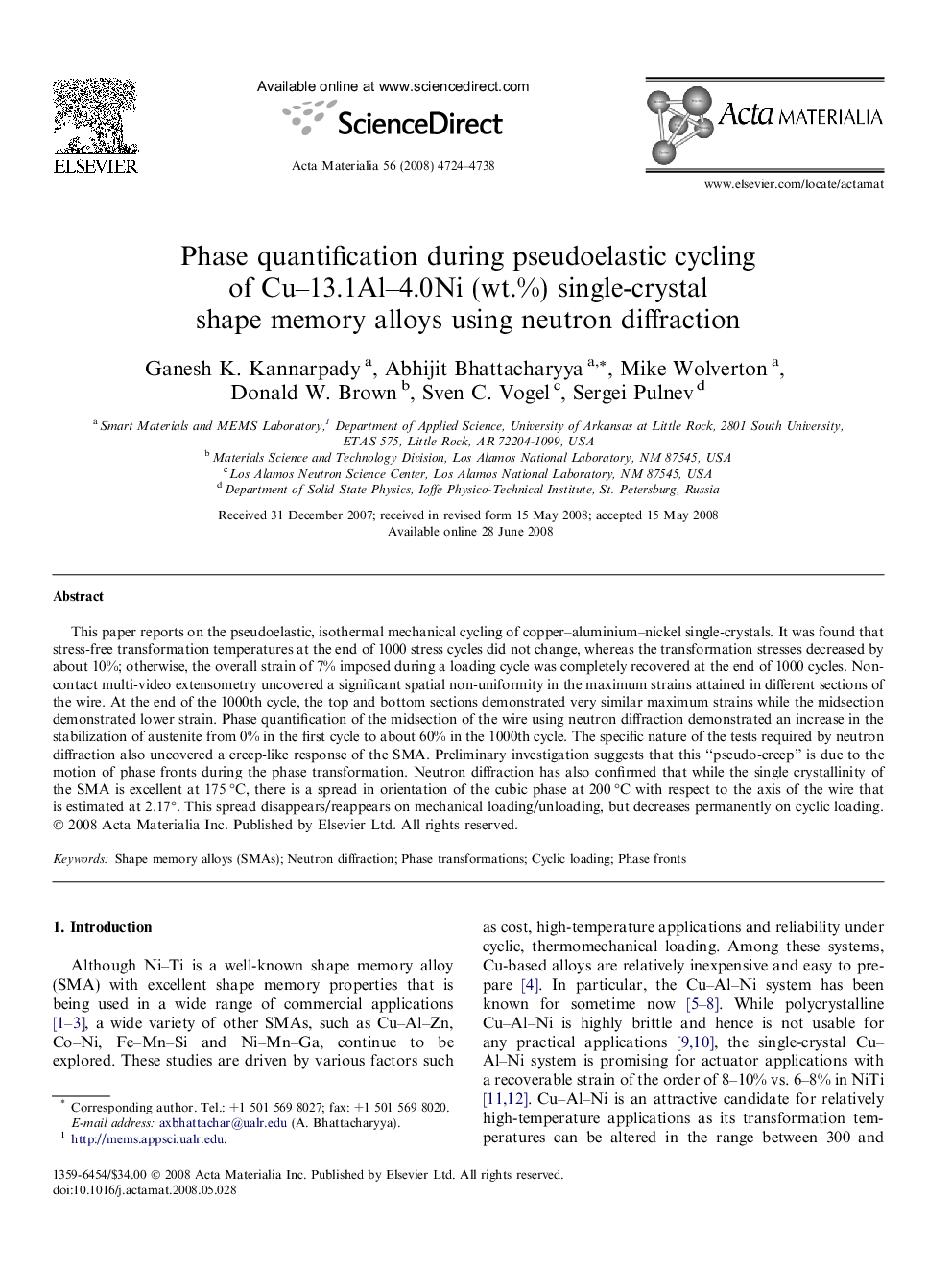| Article ID | Journal | Published Year | Pages | File Type |
|---|---|---|---|---|
| 1450021 | Acta Materialia | 2008 | 15 Pages |
This paper reports on the pseudoelastic, isothermal mechanical cycling of copper–aluminium–nickel single-crystals. It was found that stress-free transformation temperatures at the end of 1000 stress cycles did not change, whereas the transformation stresses decreased by about 10%; otherwise, the overall strain of 7% imposed during a loading cycle was completely recovered at the end of 1000 cycles. Non-contact multi-video extensometry uncovered a significant spatial non-uniformity in the maximum strains attained in different sections of the wire. At the end of the 1000th cycle, the top and bottom sections demonstrated very similar maximum strains while the midsection demonstrated lower strain. Phase quantification of the midsection of the wire using neutron diffraction demonstrated an increase in the stabilization of austenite from 0% in the first cycle to about 60% in the 1000th cycle. The specific nature of the tests required by neutron diffraction also uncovered a creep-like response of the SMA. Preliminary investigation suggests that this “pseudo-creep” is due to the motion of phase fronts during the phase transformation. Neutron diffraction has also confirmed that while the single crystallinity of the SMA is excellent at 175 °C, there is a spread in orientation of the cubic phase at 200 °C with respect to the axis of the wire that is estimated at 2.17°. This spread disappears/reappears on mechanical loading/unloading, but decreases permanently on cyclic loading.
